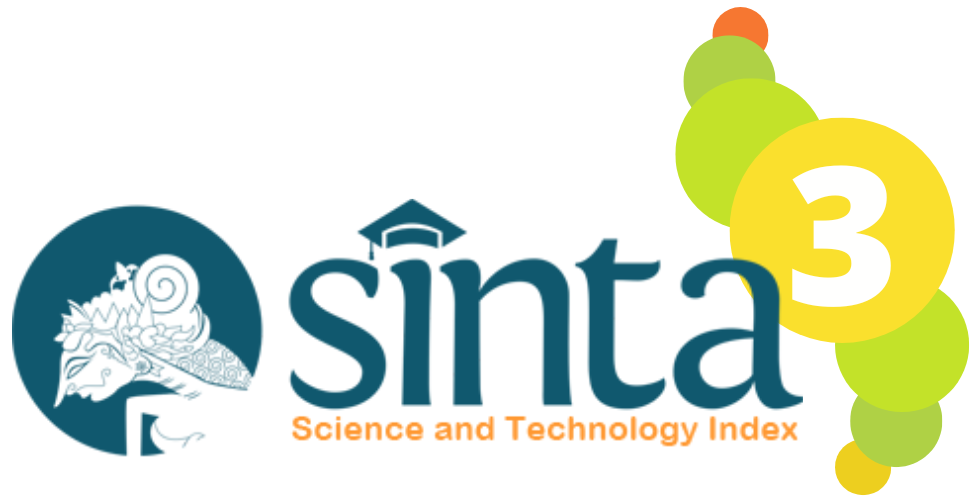OPTIMASI HYDROXYPROPYL METHYL CELLULOSE K15M DAN NATRIUM CARBOXYMETHYL CELLULOSE SEDIAAN BUCCAL FILM
DOI:
https://doi.org/10.36423/pharmacoscript.v5i1.786Keywords:
Demam Berdarah Dengue, HPMC K15, Na CMC, Buccal FilmAbstract
ABSTRACT
In 2020 the number of cases of Dengue Hemorrhagic Fever in Indonesia until the 49th week reached 95,893 cases and caused the death of around 661 people. This study aims to obtain the bestformula buccal film by optimizing the concentration of HPMC K15M and Na. CMC and evaluation of the characterization ofpreparations buccal film with 3 variations of concentration ratios against 3 formulas on HPMC K15M and Na polymer excipients. CMC include F1 0.67% : 0.33% ; F2 0.65% : 0.5% ; F3 0.33% : 0.67%. Research methods carried out bylaboratory experiments in vitro include optimization and manufacture ofpreparations buccal film and evaluation of the characterization ofpreparations buccal film. The results obtained by the three formulas met the standard with formula 3 being the best formula based on the results of viscosity 578.667±35.85, pH of wet mixture 6.24±0.08, folding resistance >300, surface pH 6.85±0.026, uniformityweight film 6 mg±0.22,thickness uniformity film 0.03±0.009 which resulted infilm a clear white, smooth and dry surface. Thus, it was concluded that from the 3 formulas with variations in the concentration of HPMC K15M and Na.CMC, the best formula was found in formula 3 and the results of the characterization evaluation met the requirements with the smallest standard deviation value.
Keywords : Dengue Hemorrhagic Fever, HPMC K15M, Na.CMC, Buccal Film
References
Ahire, K., & Gorle, A. P. (2021). An overview on methods of preparation and characterizaion of nanoemulsion. World Journal of Pharmacy and Pharmaceutical Sciences, 10(8), 897–908. https://doi.org/10.20959/wjpps20218-19575
Ansari, M., Sadarani, B., & Majumdar, A. (2018). Optimization and evaluation of mucoadhesive buccal films loaded with resveratrol. Journal of Drug Delivery Science and Technology, 44, 278–288. https://doi.org/10.1016/j.jddst.2017.12.007
Asy, Z. H. R., Puspita, O. E., & Shalas, A. F. (2021). Optimasi Formula Nanoemulsi Nifedipin Dengan Metode Self-Nanoemulsifying Drug Delivery System (SNEDDS). Pharmaceutical Journal of Indonesia, 6(2), 85–95. http://.pji.ub.ac.id
El-Maghraby, G. M., & Abdelzaher, M. M. (2015). Formulation and evaluation of simvastatin buccal film. Journal of Applied Pharmaceutical Science, 5(4), 70–77. https://doi.org/10.7324/JAPS.2015.50412
Gotalia, F. (2012). Formulasi Film Bucal Mukoadesif dengan Pragelatinisasi Pati Singkong Ftalat Sebagai Polimet Pembentuk Film.
Inayah, S., Febrina, L., Tobing, N. E. K. P., & Fadraersada, J. (2018). Formulasi dan Evaluasi Sediaan Patch Bukal Mukoadhesif Celecoxib. Proceeding of Mulawarman Pharmaceuticals Conferences, 8, 177–183. https://doi.org/10.25026/mpc.v8i1.321
Indriyani, D. P. R., & Gustawan, I. W. (2020). Manifestasi klinis dan penanganan demam berdarah dengue grade 1: sebuah tinjauan pustaka. Intisari Sains Medis, 11(3), 694. https://doi.org/10.15562/ism.v11i3.847
Kemenkes RI. (2020, December 3). Data Kasus Terbaru DBD di Indonesia. Kementerian Kesehatan RI. https://www.kemkes.go.id/article/view/20120300001/data-kasus-terbaru-dbd-di-indonesia.html
Kumar, S. G., Kumar, P. T., & Charyulu, N. R. (2010). Formulation and in-vitro evaluation of buccoadhesive compacts of salbutamol sulphate. Internasional Journal of Drug Development & Research, 2(4), 912–920. http://www.ijddr.in
Madhavi B, R., Murthy, V. S., Rani A, P., & Gattu, D. K. (2013). Buccal Film Drug Delivery System-An Innovative and Emerging Technology. Journal of Molecular Pharmaceutics & Organic Process Research, 1(3). https://doi.org/10.4172/2329-9053.1000107
Mairi, D. S., Wulan, I., & Handayani, L. (2018). Formulasi dan Karakterisasi Buccal Film Salbutamol Sulfat. Pharmauho Majalah Farmasi, Sains Dan Kesehatan, 4(1), 57–59.
Noor Diansyah, M., & Astha Triyono, E. (2013). Effect of red yeast rice (Monascus Purpureus) extract to the trombopoietin level in dengue infected patients. Folia Medica Indonesiana, 49, 220–225.
Nugroho, C. B., Yuniarsih, N., & Widiawan, S. (2015). Pengaruh Kecepatan Putar Poros terhadap Massa dan Volume Bakso yang Dihasilkan pada Vertical Meatballs Machine. 7(2), 119–122.
Puratchikody, A., Prasanth, V. V., Mathew, S. T., & Kumar, B. A. (2011). Development and characterization of mucoadhesive patches of salbutamol sulfate for unidirectional buccal drug delivery. Acta Pharmaceutica, 61(2), 157–170. https://doi.org/10.2478/v10007-011-0011-9
Putu, L., Saraswati, C., & Mulyantari, N. K. (2017). Prevalensi Demam Berdarah Dengue (DBD) Primer dan Sekunder Berdasarkan Hasil Pemeriksaan Serologis Di Rumah Sakit Balimed Denpasar. Jurnal Medika, 6(8), 2303–1395. http://ojs.unud.ac.id/index.php/eum
Qomariyah, N., Ameliana, L., & Oktora Ruma Kumala Sari, L. (2017). Optimasi Konsentrasi Hidroksipropil Selulosa dan Polivinilpirolidon dalam Sediaan Optimasi Konsentrasi Hidroksipropil Selulosa dan Polivinilpirolidon dalam Sediaan Buccal Film Simvastatin. Jurnal Pustaka Kesehatan, 5(1).
Repka, M. A., Chen, L.-I., Chan, R. S., & Wilson, C. G. (2011). Controlled Release in Oral Drug Delivery. https://doi.org/10.1007/978-1-4614-1003-4
Saputra, N. T., Suartha, I. N., & Dharmayudha, A. A. G. O. (2018). Agen Diabetagonik Streptozotocin untuk Membuat Tikus Putih Jantan Diabetes Mellitus. Buletin Veteriner Udayana, 10(2), 116. https://doi.org/10.24843/bulvet.2018.v10.i02.p02
World Health Organization. (2011). Comprehensive guidelines for prevention and control of dengue and dengue haemorrhagic fever. World Health Organization Regional Office for South-East Asia.
Wowor, R. (2017). Pengaruh Kesehatan Lingkungan terhadap Perubahan Epidemiologi Demam Berdarah di Indonesia. Jurnal E-Clinic (ECI), 5(2).
Downloads
Published
Issue
Section
License
Copyright (c) 2022 Firmansya Ardianes, Nurdianti Lusi, Yustira Erin, Ligarsari Dwi Lista , Rafanida Reiza Alvita

This work is licensed under a Creative Commons Attribution-ShareAlike 4.0 International License.
Authors who publish with this journal agree to the following terms:
- Authors retain copyright and grant the journal right of first publication, with the work [SPECIFY PERIOD OF TIME] after publication simultaneously licensed under a Creative Commons Attribution License that allows others to share the work with an acknowledgement of the work's authorship and initial publication in this journal.
- Authors are able to enter into separate, additional contractual arrangements for the non-exclusive distribution of the journal's published version of the work (e.g., post it to an institutional repository or publish it in a book), with an acknowledgement of its initial publication in this journal.
- Authors are permitted and encouraged to post their work online (e.g., in institutional repositories or on their website) prior to and during the submission process, as it can lead to productive exchanges, as well as earlier and greater citation of published work (See The Effect of Open Access).









